@THLR I’ve never seen wrist warmers before. I can imagine they serve a similar purpose as a slightly long sleeve with thumb holes? Probably more versatile but I’d lose them in a day.
Navigation
Install the app
How to install the app on iOS
Follow along with the video below to see how to install our site as a web app on your home screen.
Note: This feature may not be available in some browsers.
More options
Style variation
You are using an out of date browser. It may not display this or other websites correctly.
You should upgrade or use an alternative browser.
You should upgrade or use an alternative browser.
Mountain skill & gear, picture & tip thread
- Thread starter THLR
- Start date
THLR
WKR
- Joined
- Mar 6, 2020
- Messages
- 324
Yes pretty much. I find that I only use wristwarmers in severe cold when I need to adjust layers depending on activity and output. Don't really use them outside winter.[...] I can imagine they serve a similar purpose as a slightly long sleeve with thumb holes? [...]
- Wool sweather, weight depending on season. Aclima or Devold: Expedition or Combat series.
Hi Thomas, thank you for this thread!
Quick gear question - do Devold do a Combat series? I can't see it on their site ... do they have a dedicated military website?
THLR
WKR
- Joined
- Mar 6, 2020
- Messages
- 324
No, it's me mixing up names...Quick gear question - do Devold do a Combat series? I can't see it on their site ... do they have a dedicated military website?
My baselayer is Aclima woolnet
The less extreme version/ using only one baselayer version of above, Devold Woolmest

Denne siden finnes ikke
Vi har dessverre gått inn en blindvei her. Vi er lei for det!
The "best" for controlling heatloss. I say best due heaviest weave and proper zipper that really open up the chest and let heat out when needed. Devold Expedition
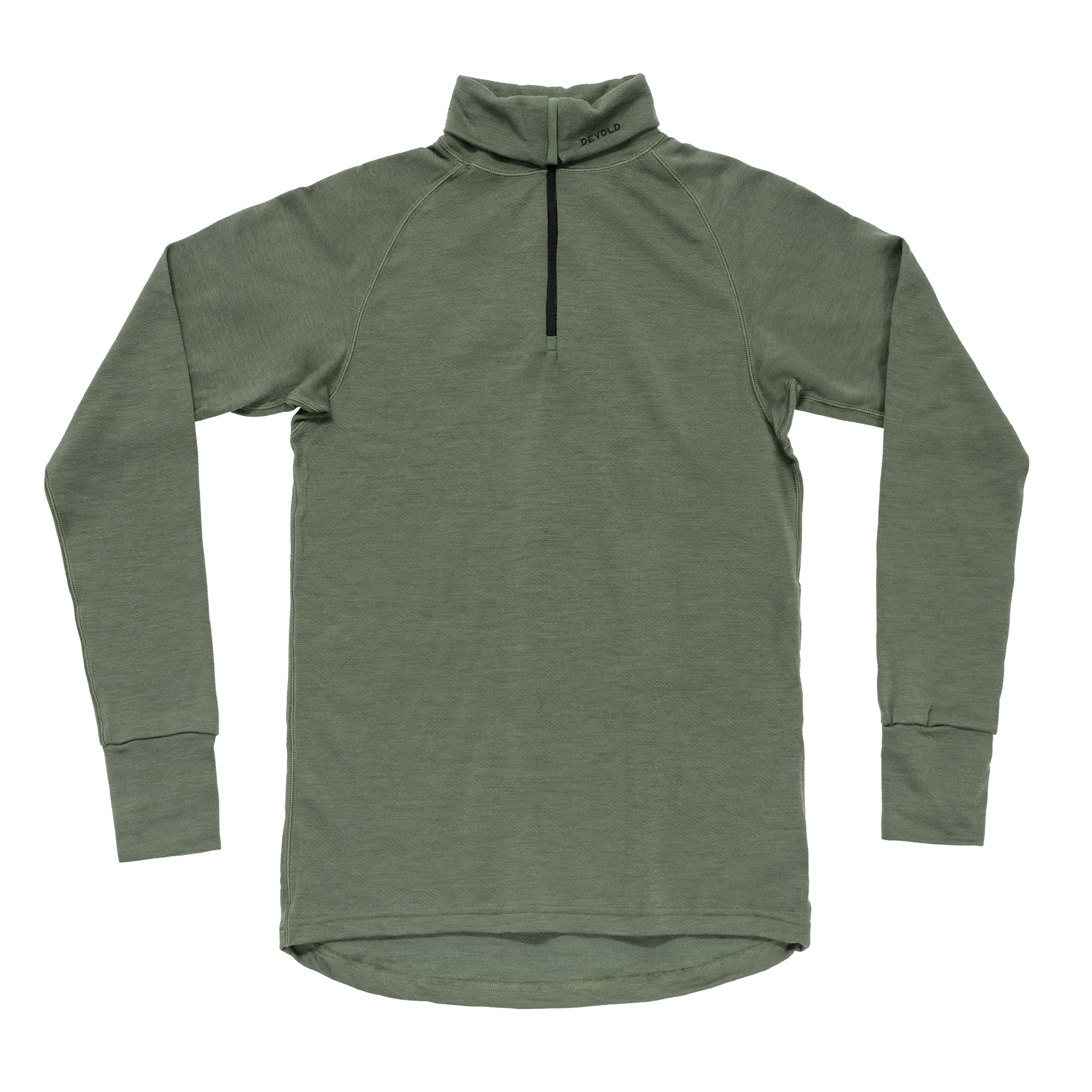
EXPEDITION MERINO 235 Z.NECK MAN
Devold Expedition merino zip neck is a two-layer wool base layer designed for extreme weather conditions, tested on multiple polar expeditions. The inside is made of 100% soft merino wool, while the outside consists of 90% Aquaduct-treated merino wool. The Aquaduct treatment in the outer layer...
This if you need to heat batteries and like a hood, Devold Expedition Arctic:

Denne siden finnes ikke
Vi har dessverre gått inn en blindvei her. Vi er lei for det!
This is Brynje Arctic Combatshirt if you do sweaty stop/go in not so cold weather. Keeps the arms warmer than with just sweat-wicking baselayer.
Logg inn Brynje
Aclima woolnet hybrid longs if you don't really need that much heat, but don't like to let the wind plaster cold fabric straight on your skin and you want to protect your knees a little
I use Aclima woolnet + Devold Expedition (or a summerwool depending on weather). The benefit is that you don't get that clingy wet "towel" of a shirt when you stop. When I did my last mountain hunt it was cold/windy enough to give me a "ice helmet" in the hair from the sweat, so I put on my wool cap to remove it. When I stalked close to the animals and was immobilized, my hands generated the most discomfort (thin gloves, ready on the rifle), groin second (lying on prone). None on the torso or knees.
Sadly prices on these products have skyrocketed lately...
Last edited:
THLR
WKR
- Joined
- Mar 6, 2020
- Messages
- 324
And for the snow-oriented readers, here is a short & good read that sums up my avalanche skills. It's easy enough to read that any mountain hunter should look, some easy pointers there.
I have very little "snow skill" (snowprofile, assessing avalanche risk etc). I can recognize the obvious dangers and I am more geared towards routing and avoiding it alltogether.
https://en.visitsvalbard.com/dbimgs/Basic-Avalache-Kowledge-and-safe-routing-in-avalache-terrain.pdf
I have very little "snow skill" (snowprofile, assessing avalanche risk etc). I can recognize the obvious dangers and I am more geared towards routing and avoiding it alltogether.
THLR
WKR
- Joined
- Mar 6, 2020
- Messages
- 324
Gear selection should be driven by the weather and terrain you expect to encounter and be weighed against your preference and acceptance of risk and discomfort. Clothing and equipment in the hunting world has finally started to catch up to the quality of stuff that has existed in mountaineering for a long time.
[...]
Not really. I think ColeyG formulated it a lot better and shortert than I would have...Now that you've covered the top layer, do you want to cover the lower half also?
It's easy to write about merino, because the merino weave techniques I wrote about performs at a higher level than standard merino which many readers here would be familiar with. Over here, that's more fashion/everyday/outdoorsy-looksy-in-cafe/Instagram weaves, but not really performance. You get a fair bit of merino performance, but not the expertise from the manufacturer.
For pants, fit is very important to me. No sliding on hips, covered waist, good fit against legs/ boots.
Remember that pants contact the terrain a lot more than the jacket. Yet any advertiser would tell you that jackets get more attention from buyers...
My current winter pants is a Patagonia climbing pant with suspenders. It is super light and absolutely windproof, excellent hip and movement. I layer it between my merino and overwhites.
My current allround outdoors workpants is Norrøna Svalbard syntethic. Nothing special about it, bought it on sale and it is "good enough". The summer version is from Bergans. Again, nothing special. It fit and it was cheap enough.
My current rainpant is Blaser Venture (sponsored) pullover. The fabric is stronger than other lightweights I've used. I layer it over a softshell or over my Norrøna Finnskogen goretex. I've long since puntured my Norrøna Finnskogen, but the two together creates an absolutely longterm waterproof solution for the real piss weather. For a wet forest, the Norrøna is perfectly fine stand-alone and for a wet mountain the Venture is good over a softshell.
Arcteryx has excellent quality and fit for me, as do Mammut, i just don't have any right now. I'm not buying unless there is a sale.
Other brands/models have ticked the boxes in their advertising but have not performed either in fit or longevity, poor seams, chinaman fit etc. It seems like many brands that does alpine/backcountry stuff sinks more expertise into their pants than the hunting brands. I have no idea why, both the knowledge and market is there, why don't we see it in hunting brands?
So there's no system to it. It is "driven by the weather and terrain you expect to encounter and be weighed against your preference and acceptance of risk and discomfort." and I accept different levels of discomfort for different activities/seasons. As a sidenote, this used to be my favorite pants for spring hunting, model 1914 wool pant (can't get them anymore):

Last edited:
Elmer J. Fudd
WKR
- Joined
- Mar 22, 2020
- Messages
- 352
Just want to say thank you for posting this. I find it very interesting and informative. It's was a cool thread to stumble upon. The pictures are a great bonus too. Overall a very interesting topic. I am hoping you have even more tips and stories to keep this going.
THLR
WKR
- Joined
- Mar 6, 2020
- Messages
- 324
Thanks, was hoping for some more alpine stuff too. Here's a film showing my winter hunting/ mountains.
As you can hear from the snow, this is cold to very cold conditions.
Note shape of hood!
As you can hear from the snow, this is cold to very cold conditions.
Note shape of hood!
ColeyG
WKR
- Joined
- Oct 25, 2017
- Messages
- 447
How about some discussion of a lightweight high angle safety kit. I feel like a common problem and/or scenario here in AK that a lot of mountain hunters run into is not being able to recover animals like goats and sheep that tumble into technical terrain.
Many times a simple steep step or exposed traverse is all that keeps the hunters from being able to get to and/or retrieve the animal.
Obviously having some self control and not taking shots at animals in spots where they are likely to fall into bad terrain is the best bet, but I am sure we all know that despite out best efforts sometimes things can go sideways.
I've taken a lightweight rappelling kit into goat country a few times and have yet to use it, but here is my minimum kit for being able to rappel into a gully or over a steep step and/or rig a static safety line to protect a traverse or ascent out of a steep spot.
1. Aluminum Crampons. Camp USA xlc490 (21.5oz)
2. Lightweight aluminum ice axe. Grivel Airtech Racing cut down to 14" (15oz)
3. Lightweight harness. Black Diamond Couloir (3.7oz)
4. Belay rappel device. Petzl Reversino (1.7oz)
5. 100' of 6mil cord (23.6oz)
6. 100' of P cord (10oz)
7. One locking carabiner. Black Diamond Vaporlock (1.8oz)
8. Misc cordage and webbing for build anchorage (12oz)
With this basic kit weighing about 5.5lbs I feel pretty good about being able to safely navigate getting into, out of or over a short "technical" section of terrain or to make multiple rappels in medium to high angle terrain to access easier terrain below.
The most important component by far is the knowledge and judgement necessary to be able to find and build safe anchorage and identify things like overhead hazard, sharp edges, etc. It should be noted that I am also using some of this gear outside of manufacturer's recommendations and guidelines like rapping and/or ascending on a single 6 mil strand etc. I also wouldn't use this approach in anything approaching vertical terrain.
Finding good natural anchors like trees, large, stable rocks, etc. is often the biggest challenge in most of the alpine terrain where I have considered the need for this type of kit in the past.
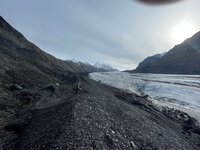
Many times a simple steep step or exposed traverse is all that keeps the hunters from being able to get to and/or retrieve the animal.
Obviously having some self control and not taking shots at animals in spots where they are likely to fall into bad terrain is the best bet, but I am sure we all know that despite out best efforts sometimes things can go sideways.
I've taken a lightweight rappelling kit into goat country a few times and have yet to use it, but here is my minimum kit for being able to rappel into a gully or over a steep step and/or rig a static safety line to protect a traverse or ascent out of a steep spot.
1. Aluminum Crampons. Camp USA xlc490 (21.5oz)
2. Lightweight aluminum ice axe. Grivel Airtech Racing cut down to 14" (15oz)
3. Lightweight harness. Black Diamond Couloir (3.7oz)
4. Belay rappel device. Petzl Reversino (1.7oz)
5. 100' of 6mil cord (23.6oz)
6. 100' of P cord (10oz)
7. One locking carabiner. Black Diamond Vaporlock (1.8oz)
8. Misc cordage and webbing for build anchorage (12oz)
With this basic kit weighing about 5.5lbs I feel pretty good about being able to safely navigate getting into, out of or over a short "technical" section of terrain or to make multiple rappels in medium to high angle terrain to access easier terrain below.
The most important component by far is the knowledge and judgement necessary to be able to find and build safe anchorage and identify things like overhead hazard, sharp edges, etc. It should be noted that I am also using some of this gear outside of manufacturer's recommendations and guidelines like rapping and/or ascending on a single 6 mil strand etc. I also wouldn't use this approach in anything approaching vertical terrain.
Finding good natural anchors like trees, large, stable rocks, etc. is often the biggest challenge in most of the alpine terrain where I have considered the need for this type of kit in the past.

Jake Larsen
WKR
Another couple great options for a super lightweight crampon is the Petzl Leopard LLF/FL, or the Irvis Hybrid. Can add anti balling plates to the Leopard series also. Amazingly light weight.How about some discussion of a lightweight high angle safety kit. I feel like a common problem and/or scenario here in AK that a lot of mountain hunters run into is not being able to recover animals like goats and sheep that tumble into technical terrain.
Many times a simple steep step or exposed traverse is all that keeps the hunters from being able to get to and/or retrieve the animal.
Obviously having some self control and not taking shots at animals in spots where they are likely to fall into bad terrain is the best bet, but I am sure we all know that despite out best efforts sometimes things can go sideways.
I've taken a lightweight rappelling kit into goat country a few times and have yet to use it, but here is my minimum kit for being able to rappel into a gully or over a steep step and/or rig a static safety line to protect a traverse or ascent out of a steep spot.
1. Aluminum Crampons. Camp USA xlc490 (21.5oz)
2. Lightweight aluminum ice axe. Grivel Airtech Racing cut down to 14" (15oz)
3. Lightweight harness. Black Diamond Couloir (3.7oz)
4. Belay rappel device. Petzl Reversino (1.7oz)
5. 100' of 6mil cord (23.6oz)
6. 100' of P cord (10oz)
7. One locking carabiner. Black Diamond Vaporlock (1.8oz)
8. Misc cordage and webbing for build anchorage (12oz)
With this basic kit weighing about 5.5lbs I feel pretty good about being able to safely navigate getting into, out of or over a short "technical" section of terrain or to make multiple rappels in medium to high angle terrain to access easier terrain below.
The most important component by far is the knowledge and judgement necessary to be able to find and build safe anchorage and identify things like overhead hazard, sharp edges, etc. It should be noted that I am also using some of this gear outside of manufacturer's recommendations and guidelines like rapping and/or ascending on a single 6 mil strand etc. I also wouldn't use this approach in anything approaching vertical terrain.
Finding good natural anchors like trees, large, stable rocks, etc. is often the biggest challenge in most of the alpine terrain where I have considered the need for this type of kit in the past.
View attachment 372375
Sent from my Pixel 6 using Tapatalk
THLR
WKR
- Joined
- Mar 6, 2020
- Messages
- 324
Very interesting.How about some discussion of a lightweight high angle safety kit. I feel like a common problem and/or scenario here in AK that a lot of mountain hunters run into is not being able to recover animals like goats and sheep that tumble into technical terrain.
[...]
1. Aluminum Crampons. Camp USA xlc490 (21.5oz)
2. Lightweight aluminum ice axe. Grivel Airtech Racing cut down to 14" (15oz)
3. Lightweight harness. Black Diamond Couloir (3.7oz)
4. Belay rappel device. Petzl Reversino (1.7oz)
5. 100' of 6mil cord (23.6oz)
6. 100' of P cord (10oz)
7. One locking carabiner. Black Diamond Vaporlock (1.8oz)
8. Misc cordage and webbing for build anchorage (12oz)
[...]
Is this mostly for getting down to and hoisting the game further down?
After crushing two cameras last season ($3K lost) I have concluded I need to secure my tripods better. I figured I could try tentline as it's easy to draw tight.
Also looking if it's possibly to replace my camera chestrig webbing (it's a modified military chestrig) with something closer to a fall arrest harness, I don't really need a seat. Espesially when I'm still below the treeline I occasionally scramble a little. Over the treeline I can see better and solve by route.
I figure it should be possible to put my deer/goats in a cargonett and click these straight onto the harness or backpack via carabiner or similar. Problem I sometimes have otherwise is that a leg or head occasionally wiggles loose and poke "everywhere".
Not sure if this will work.
ColeyG
WKR
- Joined
- Oct 25, 2017
- Messages
- 447
This gear could be used for a variety of purposes; to access game that has fallen into a difficult or dangerous spot to reach, for personal security while dealing with game in a steep environment, for raising and lowering game and gear in steep terrain, to assist in navigating short steps of steep terrain on descent, etc.
I wouldn't recommend using any sort of chest harness, without a waist harness for rappeling or anchoring yourself. Chest harnesses are meant to be used in combination with a waist harness in situations where it may be hard to maintain an upright position, like with a heavy back in a crevasse fall situation etc.
For dragging game, a rollup plastic sled/sked would be easier to pull than a cargo net. I've had better luck pulling heavy sleds using the waist belt on my backpack as opposed to a waist harness, which puts all of the weight on your hips/waits with little to no padding.
Here is an article I put together a while back about rigging sleds for glacier travel. Some of the same rigging and gear can apply to any sort of load dragging I suppose.

 www.alpineinstitute.com
www.alpineinstitute.com
I wouldn't recommend using any sort of chest harness, without a waist harness for rappeling or anchoring yourself. Chest harnesses are meant to be used in combination with a waist harness in situations where it may be hard to maintain an upright position, like with a heavy back in a crevasse fall situation etc.
For dragging game, a rollup plastic sled/sked would be easier to pull than a cargo net. I've had better luck pulling heavy sleds using the waist belt on my backpack as opposed to a waist harness, which puts all of the weight on your hips/waits with little to no padding.
Here is an article I put together a while back about rigging sleds for glacier travel. Some of the same rigging and gear can apply to any sort of load dragging I suppose.

Expedition Sled Rigging
...rope, and flipping over. Don’t worry – it is all par for the course, just one of the joys of expedition climbing. Having set the stage for frustration, I can...
THLR
WKR
- Joined
- Mar 6, 2020
- Messages
- 324
Cool! I'm not a climber, but I think we agree on harness.
Sled setup is a little different here.
Connect to sled and backpack as you do. But the rope between backpack and sled is single, two loops tied on the rope and a double elastic between those two loops. Creates a little U and significantly reduces the impact on your hips as you accelerate the sled (Elastic builds up tension before rope fully connects).
Also sleds are usually rigged for loading/unloading with mittens. Paris Expedition pulks are popular as they have a different front and are perhaps a little easier to muscle over obstacles.
This is not my picture and I'm used to bigger carabiners...
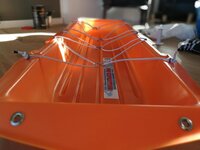
Here's how I carry now. I bought a smaller Kuiu PRO 1850 for this, but that pack is worse than anything I got (the 7800 is ok). Picture doesn't really show but I simply strap it to the backpack. if you look at the shadow you see how the goat is a little low. So this is now approaching 50 kgs/100lbs but it's not that far to the valley floor and road access (typically 500-600m/1500-2000' elevation)
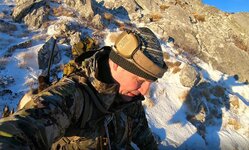
Here you see the valley in the background. Maybe 30-40° the steepest parts, but usually less. Nothing vertical or technical where I go, but of course snow and occasional ice.
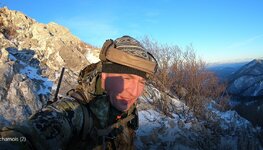
Sled setup is a little different here.
Connect to sled and backpack as you do. But the rope between backpack and sled is single, two loops tied on the rope and a double elastic between those two loops. Creates a little U and significantly reduces the impact on your hips as you accelerate the sled (Elastic builds up tension before rope fully connects).
Also sleds are usually rigged for loading/unloading with mittens. Paris Expedition pulks are popular as they have a different front and are perhaps a little easier to muscle over obstacles.
This is not my picture and I'm used to bigger carabiners...

Here's how I carry now. I bought a smaller Kuiu PRO 1850 for this, but that pack is worse than anything I got (the 7800 is ok). Picture doesn't really show but I simply strap it to the backpack. if you look at the shadow you see how the goat is a little low. So this is now approaching 50 kgs/100lbs but it's not that far to the valley floor and road access (typically 500-600m/1500-2000' elevation)

Here you see the valley in the background. Maybe 30-40° the steepest parts, but usually less. Nothing vertical or technical where I go, but of course snow and occasional ice.

Last edited:
ColeyG
WKR
- Joined
- Oct 25, 2017
- Messages
- 447
Good tip on both the sleds, I am a big fan of the Paris Expedition as well, and the shock cord attachment point.
Having the stretchy buffer take the load first does make a huge in reducing both fatigue and annoyance. The sled brake for descending with a loaded sled is also key.
There is a little more rigging built into my setup because of the importance of not losing your sled on a mountaineering trip. Three attachment points (two to the pack, one to the climbing rope) and a secure system for attaching your sled duffle are needed to make sure you food, fuel, and survivable equipment don't fall off of the mountain or into a deep dark crevasse.
Having the stretchy buffer take the load first does make a huge in reducing both fatigue and annoyance. The sled brake for descending with a loaded sled is also key.
There is a little more rigging built into my setup because of the importance of not losing your sled on a mountaineering trip. Three attachment points (two to the pack, one to the climbing rope) and a secure system for attaching your sled duffle are needed to make sure you food, fuel, and survivable equipment don't fall off of the mountain or into a deep dark crevasse.
- Banned
- #37
@THLR....
I just wonder about the wool. I have found if it gets wet it will not dry in a days hunting for me. Sometimes just from sweat during high exertion. I do wear a merino base layer for odor control and also I don't think it "sticks" to me like some synthetics do.
Wondering why you don't use the synthetics? Looks like your pants are synthetic.
Also, do you just think it's the quality of the wool you use? Or is it because a "sweater" is fairly open weave and "breathes" better?
Do you use the same for multi day hunts?
Thanks!
I just wonder about the wool. I have found if it gets wet it will not dry in a days hunting for me. Sometimes just from sweat during high exertion. I do wear a merino base layer for odor control and also I don't think it "sticks" to me like some synthetics do.
Wondering why you don't use the synthetics? Looks like your pants are synthetic.
Also, do you just think it's the quality of the wool you use? Or is it because a "sweater" is fairly open weave and "breathes" better?
Do you use the same for multi day hunts?
Thanks!
THLR
WKR
- Joined
- Mar 6, 2020
- Messages
- 324
With the exception of the baselayer, almost everything is synthethic. Either waterproof, windproof, wind resistant or wicking. I like fabrics that are windresistant and duplicate the comfort of cotton without holding water.Wondering why you don't use the synthetics? Looks like your pants are synthetic.
Surprisingly, I've had recent success with combining wool baselayer with syntethic wicking or "sun" clothing, such as the Arcteryx Remige sun hoodie. It's so nice to get the neck and ears out of the sun without sweating profusely.
From comparing (mostly from looking at fabric blends and weights) I would GUESS it's avoiding syntethic blends and using different weaves that makes the difference. I've attached some pictures below.Also, do you just think it's the quality of the wool you use? Or is it because a "sweater" is fairly open weave and "breathes" better?
Yes, I don't bring anything extra except 1 extra pair of socks and 1 extra pair of felt insoles. I like my feet to be as dry as possible and I want the "mental retreat" of knowing I have dry socks in camp. I rarely use them.Do you use the same for multi day hunts?
All pictures from inside:
This is the terry weave of heavy Woolpower jacket/sweater. I use it around the house, too heavy to bring.

This is the terry weave of Janus army shirt. Very breathable and light, doesn't cling to skin.
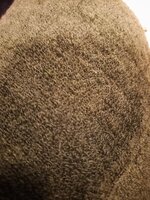
This is the thin woolnet from Devold. Similar properties to a synt wicking layer plus insulation.

This is the winter woolnet from Aclima. My go-to for sweat&cold or underneath a sun hoodie when I don't want mosquitoes to reach my skin.
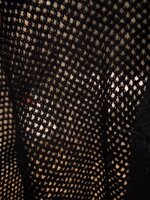
This is the double weave from Devold Expedition. This is my winter sweater combined with a woolnet. Topped with a windreaker plus shell jacket, this is all I wear even on the coldest days.

Last edited:
Thank you for all of your responses.
This year I switched to a light, thin wool base layer, followed by a mid-weight synthetic. I found the synthetic helped to wick the moisture out of the wool / skin and kept it drier.
Looking at your pics I can see why your combo of the fishnet and a woven base layer work well as a "base layer". With the conversation from you and @Formidilosus on fishnets....I may have to pick up at least a top to try this year.
Always enjoy your info and videos! Thanks for all the hard work!
This year I switched to a light, thin wool base layer, followed by a mid-weight synthetic. I found the synthetic helped to wick the moisture out of the wool / skin and kept it drier.
Looking at your pics I can see why your combo of the fishnet and a woven base layer work well as a "base layer". With the conversation from you and @Formidilosus on fishnets....I may have to pick up at least a top to try this year.
Always enjoy your info and videos! Thanks for all the hard work!
Similar threads
- Replies
- 29
- Views
- 2K
- Replies
- 42
- Views
- 2K
- Replies
- 19
- Views
- 1K
Featured Video
Latest Articles
- TT#64 Josh Boyd Elk Hunting Strategies for Every Season
- Aaron Davidson of Gunwerks
- TT#63 Dirk Durham’s Art of Elk Calling
- BIG Buck Stories with the Dirty Giants Podcast
- TT#62 Brian Barney Hunting Bulls without Calling
- Hoyt Alpha AX-2 SD Review
- Kuiu Kenai vs Outdoor Vitals Vario Hooded Jacket Review
- Hoyt RX-9 Ultra Review
- Hunting Vampire Bucks & Building an Optics Kit
- Darton Sequel ST2 35 Review
